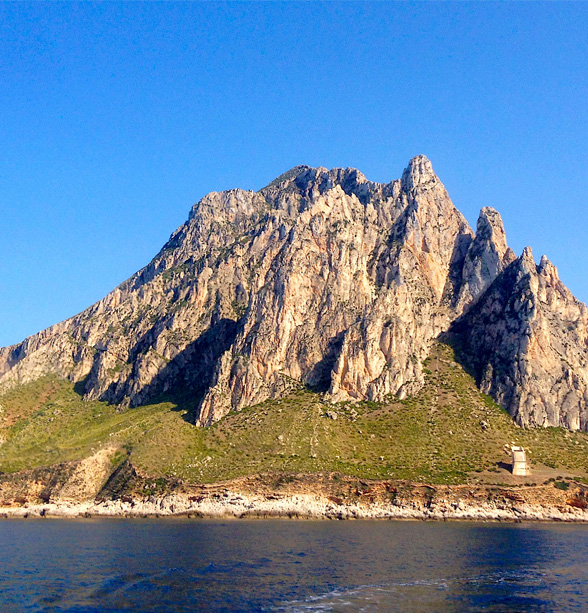
Monte Cofano Nature Reserve
Mount Cofano, whose pyramid shape is distinctive and unmistakable, is located at the end of a promontory that, on its northern side, is reflected in the crystal-clear sea of Castelluzzo and marks the beginning of the Gulf of Macari. At 659 metres high, Cofano is a dolomitic massif dating back to the Jurassic period, covered in many parts by typical Mediterranean vegetation consisting mainly of dwarf palms, ampelodesma and agaves, among which are sparse trees such as carob, cork and strawberry trees, as well as the rare Sicilian heather. As in the nearby Zingaro Nature Reserve, the fauna is predominantly avian and birds of prey are the protagonists: in addition to the imperial raven, buzzards, kestrels and peregrine falcons fly by day and give way at night to tawny owls and owls. Trekking routes are easy to follow, especially along the coast, but the Camillian watchtower of San Giovanni and the numerous caves, interesting from both a speleological and palaeontological point of view, in which traces of prehistoric settlements dating back to the Upper Palaeolithic period have been found, are also easily accessible. Worth visiting is the Mangiapane Cave, in the Scurati locality, an ancient rural agglomeration consisting of small houses on cobbled streets, inhabited until the early 20th century, which since 1983, every December, revives to become one of the most interesting and famous Living Cribs in Sicily.
Monte Cofano Nature Reserve
Mount Cofano, whose pyramid shape is distinctive and unmistakable, is located at the end of a promontory that, on its northern side, is reflected in the crystal-clear sea of Castelluzzo and marks the beginning of the Gulf of Macari. At 659 metres high, Cofano is a dolomitic massif dating back to the Jurassic period, covered in many parts by typical Mediterranean vegetation consisting mainly of dwarf palms, ampelodesma and agaves, among which are sparse trees such as carob, cork and strawberry trees, as well as the rare Sicilian heather. As in the nearby Zingaro Nature Reserve, the fauna is predominantly avian and birds of prey are the protagonists: in addition to the imperial raven, buzzards, kestrels and peregrine falcons fly by day and give way at night to tawny owls and owls. Trekking routes are easy to follow, especially along the coast, but the Camillian watchtower of San Giovanni and the numerous caves, interesting from both a speleological and palaeontological point of view, in which traces of prehistoric settlements dating back to the Upper Palaeolithic period have been found, are also easily accessible. Worth visiting is the Mangiapane Cave, in the Scurati locality, an ancient rural agglomeration consisting of small houses on cobbled streets, inhabited until the early 20th century, which since 1983, every December, revives to become one of the most interesting and famous Living Cribs in Sicily.

Erice
The medieval town, which stands on top of the mountain of the same name, has very ancient origins. Due to its privileged position, from which the view encompasses the entire territory, it was a fortified city - as evidenced by the walls enclosing the town - and the 'chief town' of the vast area stretching from Trapani to San Vito Lo Capo. Until the advent of Christianity, Erice was the site of an important cult of the goddess Venus to whom the temple/themenos, built on the Rocca, was dedicated, to which, in Norman times, the Castle was added. Today, this mixture of buildings is known as the Castle of Venus and, together with the Garden and the Balio Towers, constitutes one of the main points of interest. However, it is the entire town that envelops visitors in a particularly impressive atmosphere: Walking on the original cobblestones, surrounded by ancient stone walls protecting flower-filled courtyards, being attracted by the fragrances wafting from the pastry shops in the narrow alleys and savouring a hot 'genovese', being enchanted by the magic of small hidden corners as well as by the preciousness of the many churches - including the majestic Matrice with its tower/belfry -, falling in love with the artistic ceramics and colourful carpets, traditional masterpieces... to discover Erice is to live a rare and unforgettable experience.
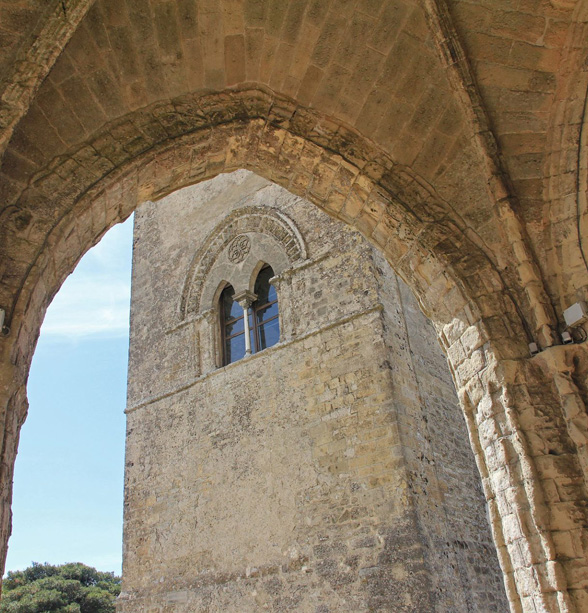
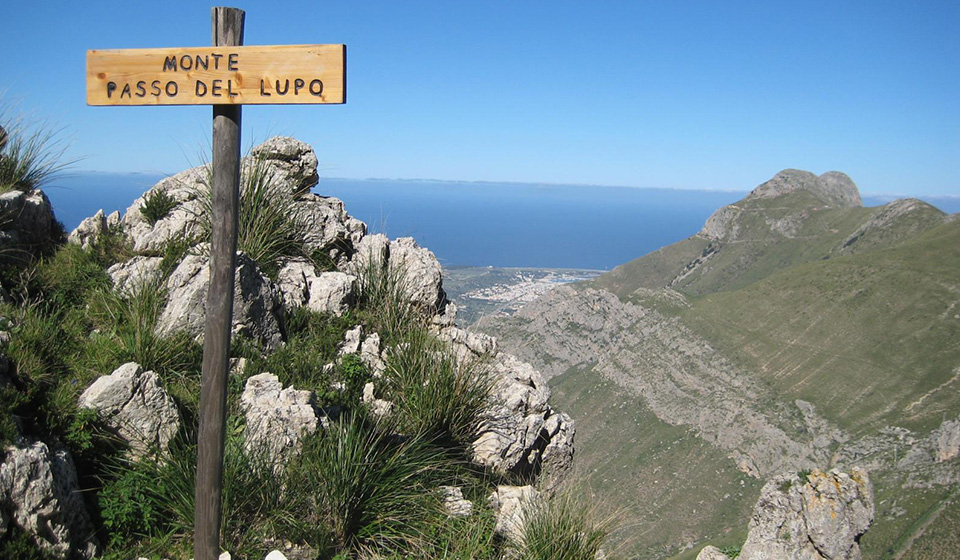
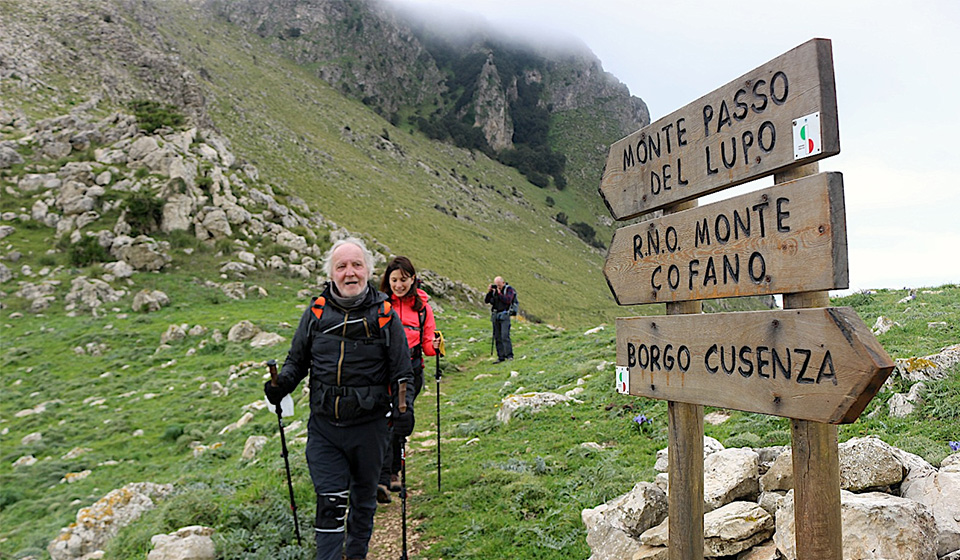
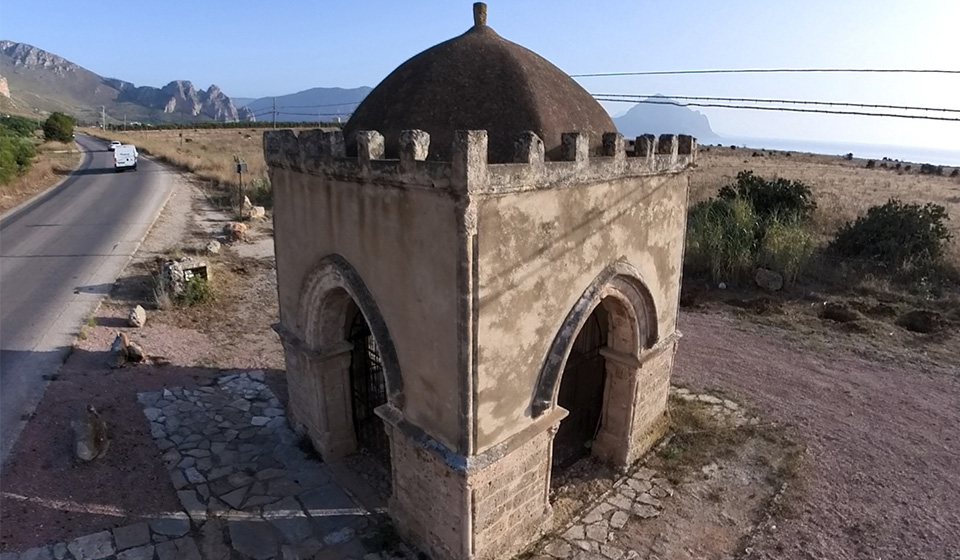
Erice
The medieval town, which stands on top of the mountain of the same name, has very ancient origins. Due to its privileged position, from which the view encompasses the entire territory, it was a fortified city - as evidenced by the walls enclosing the town - and the 'chief town' of the vast area stretching from Trapani to San Vito Lo Capo. Until the advent of Christianity, Erice was the site of an important cult of the goddess Venus to whom the temple/themenos, built on the Rocca, was dedicated, to which, in Norman times, the Castle was added. Today, this mixture of buildings is known as the Castle of Venus and, together with the Garden and the Balio Towers, constitutes one of the main points of interest. However, it is the entire town that envelops visitors in a particularly impressive atmosphere: Walking on the original cobblestones, surrounded by ancient stone walls protecting flower-filled courtyards, being attracted by the fragrances wafting from the pastry shops in the narrow alleys and savouring a hot 'genovese', being enchanted by the magic of small hidden corners as well as by the preciousness of the many churches - including the majestic Matrice with its tower/belfry -, falling in love with the artistic ceramics and colourful carpets, traditional masterpieces... to discover Erice is to live a rare and unforgettable experience.







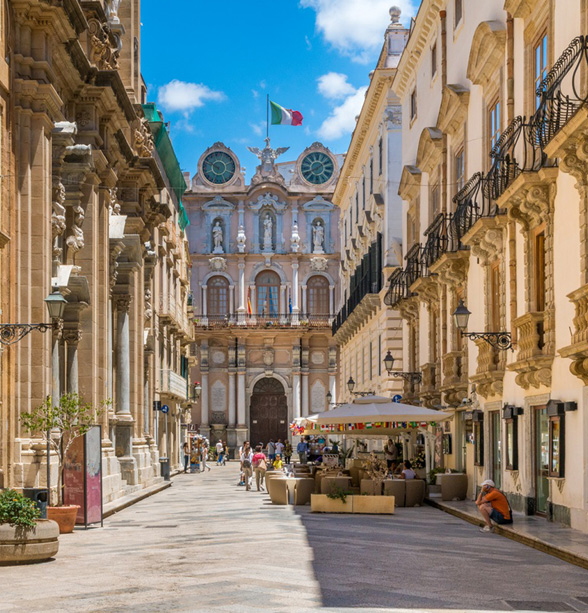
Trapani
Trapani, located on the sea between the Tyrrhenian Sea to the north and the Sicilian Channel to the south, is a city rich in history and tradition. Originally a port of Erice, Trapani developed along its characteristic sickle shape, becoming an important centre of trade since antiquity. The Phoenicians established salt pans here and promoted the cultivation of olive trees, influencing the local gastronomy. Traditional dishes such as Trapani-style cùscusu, Trapani pesto and panelle reflect the influence of the Maghreb peoples. A visit to Trapani would not be complete without sampling local delicacies, including Trapanese pizza and ricotta-based desserts such as cannoli and graffe. After a hearty meal, take a stroll along the ancient city walls or explore the historical centre, characterised by aristocratic palazzi and Baroque churches, including the Church of the Anime Sante del Purgatorio, famous for its sacred Mystery Groups that have been carried in procession during Holy Week for over 400 years. Trapani enchants visitors with its historical beauty and traditional cuisine, offering an unforgettable experience.
Trapani
Trapani, located on the sea between the Tyrrhenian Sea to the north and the Sicilian Channel to the south, is a city rich in history and tradition. Originally a port of Erice, Trapani developed along its characteristic sickle shape, becoming an important centre of trade since antiquity. The Phoenicians established salt pans here and promoted the cultivation of olive trees, influencing the local gastronomy. Traditional dishes such as Trapani-style cùscusu, Trapani pesto and panelle reflect the influence of the Maghreb peoples. A visit to Trapani would not be complete without sampling local delicacies, including Trapanese pizza and ricotta-based desserts such as cannoli and graffe. After a hearty meal, take a stroll along the ancient city walls or explore the historical centre, characterised by aristocratic palazzi and Baroque churches, including the Church of the Anime Sante del Purgatorio, famous for its sacred Mystery Groups that have been carried in procession during Holy Week for over 400 years. Trapani enchants visitors with its historical beauty and traditional cuisine, offering an unforgettable experience.

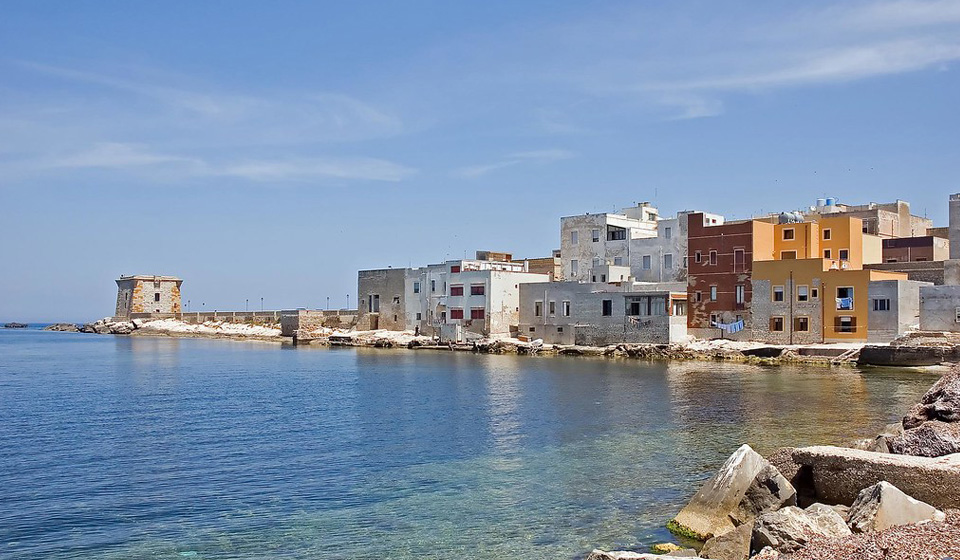
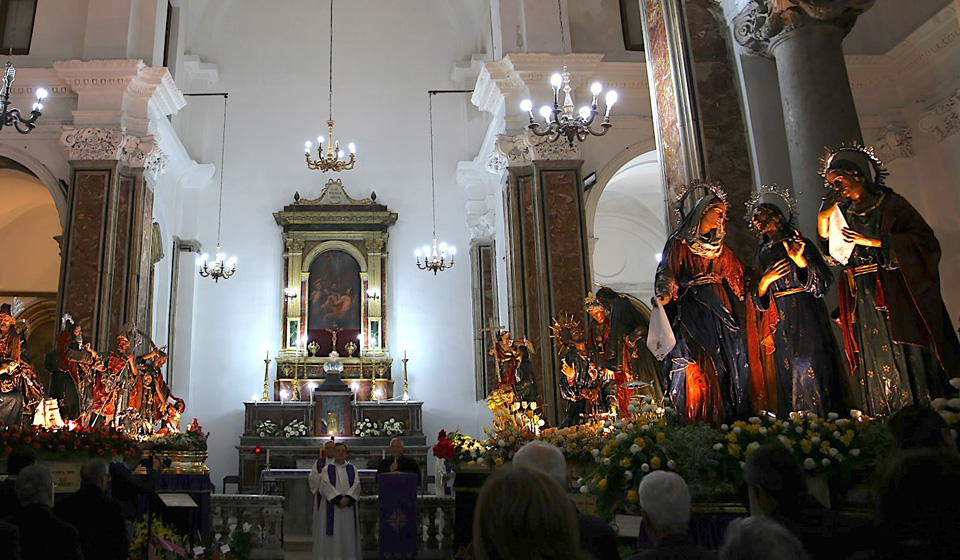




Egadi
From the port of Trapani, visible beyond the Castello di Mare - the Colombaia - is the Egadi archipelago, consisting of the islands of Favignana, Levanzo and Marettimo, as well as the islet of Formica and the rock of Maraone. The Egadi Islands are reflected in beautiful crystal-clear waters and constitute Europe's largest marine reserve, the Protected Marine Area of the Egadi Islands. Their natural beauty ranges from the sea and seabed - ideal for sailing, snorkelling and diving - and the coves where sand, rocks and pebbles alternate, to the mainland, characterised by Mediterranean vegetation with endemic medicinal plants. Favignana, the closest and largest, is also the most visited and famous and is home to the Ex Stabilimento Florio, the ancient Tonnara now a museum. The smallest, a short distance away, is Levanzo, a small fishing village where time seems to have stood still... Marettimo is the furthest away, unspoilt and wild and, in addition to its crystal-clear sea and caves that can only be reached by boat, it is characterised by a mountainous area where the highest peak is Mount Falcone, 686 metres above sea level. During a visit to the Isola Sacra, one cannot miss the Punta Troia Castle, perched on a promontory that towers 116 metres above the sea: restored and open to visitors, it retains the same structure as when it was conceived and houses in its rooms the Punta Troia Prisons Museum and the Monk Seal Observatory of the Egadi Islands Protected Marine Area.
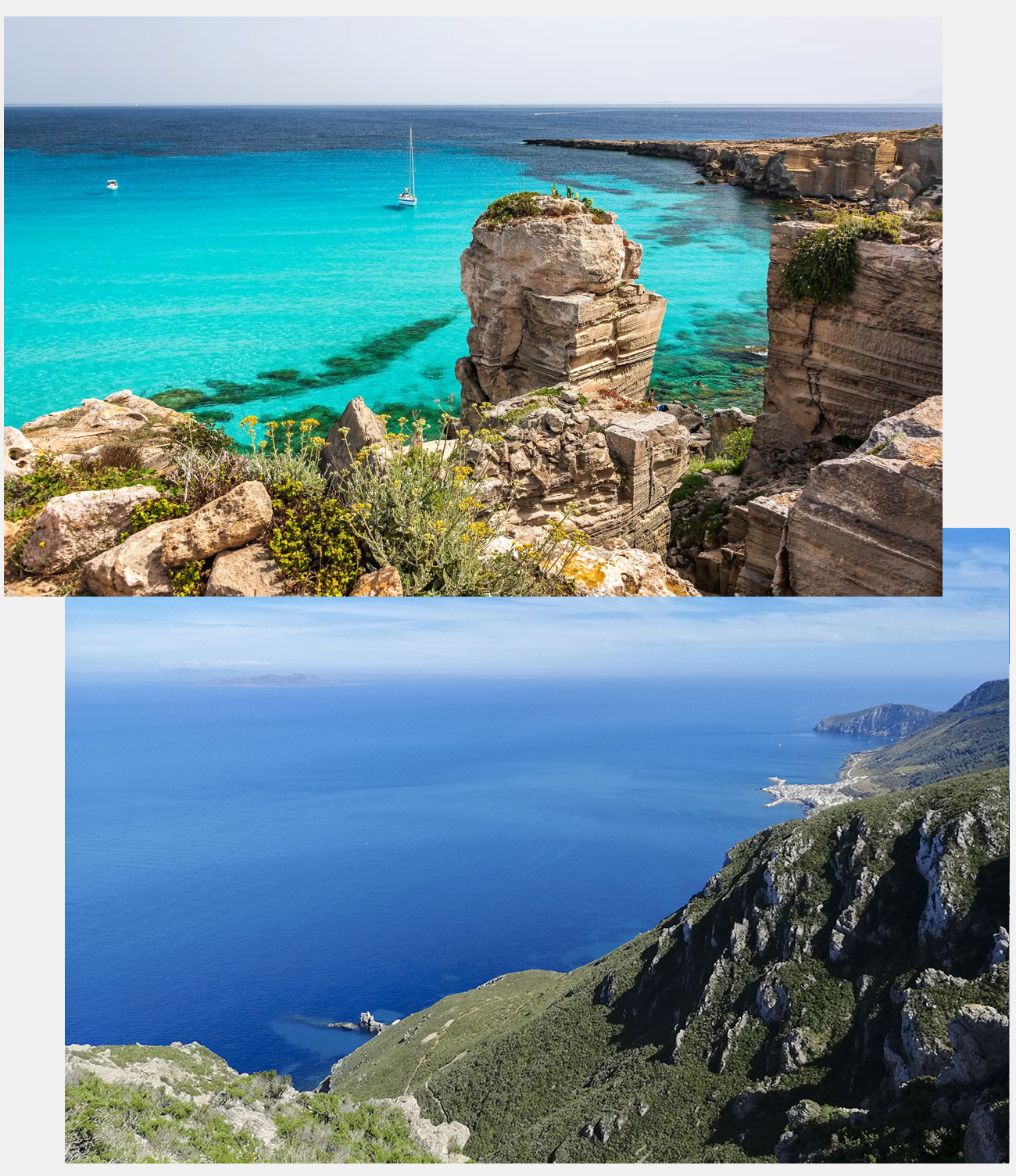



Egadi
From the port of Trapani, visible beyond the Castello di Mare - the Colombaia - is the Egadi archipelago, consisting of the islands of Favignana, Levanzo and Marettimo, as well as the islet of Formica and the rock of Maraone. The Egadi Islands are reflected in beautiful crystal-clear waters and constitute Europe's largest marine reserve, the Protected Marine Area of the Egadi Islands. Their natural beauty ranges from the sea and seabed - ideal for sailing, snorkelling and diving - and the coves where sand, rocks and pebbles alternate, to the mainland, characterised by Mediterranean vegetation with endemic medicinal plants. Favignana, the closest and largest, is also the most visited and famous and is home to the Ex Stabilimento Florio, the ancient Tonnara now a museum. The smallest, a short distance away, is Levanzo, a small fishing village where time seems to have stood still... Marettimo is the furthest away, unspoilt and wild and, in addition to its crystal-clear sea and caves that can only be reached by boat, it is characterised by a mountainous area where the highest peak is Mount Falcone, 686 metres above sea level. During a visit to the Isola Sacra, one cannot miss the Punta Troia Castle, perched on a promontory that towers 116 metres above the sea: restored and open to visitors, it retains the same structure as when it was conceived and houses in its rooms the Punta Troia Prisons Museum and the Monk Seal Observatory of the Egadi Islands Protected Marine Area.

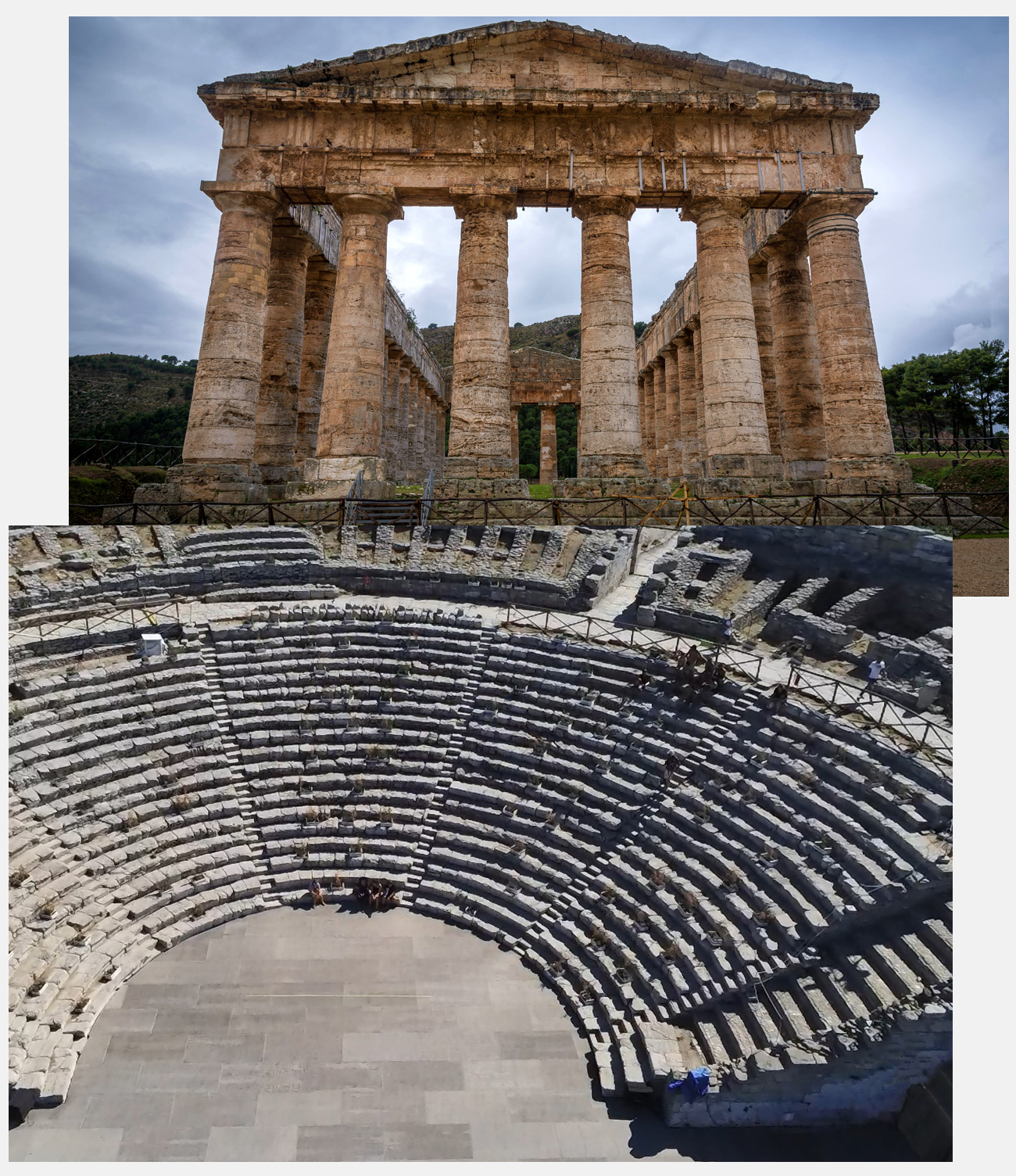
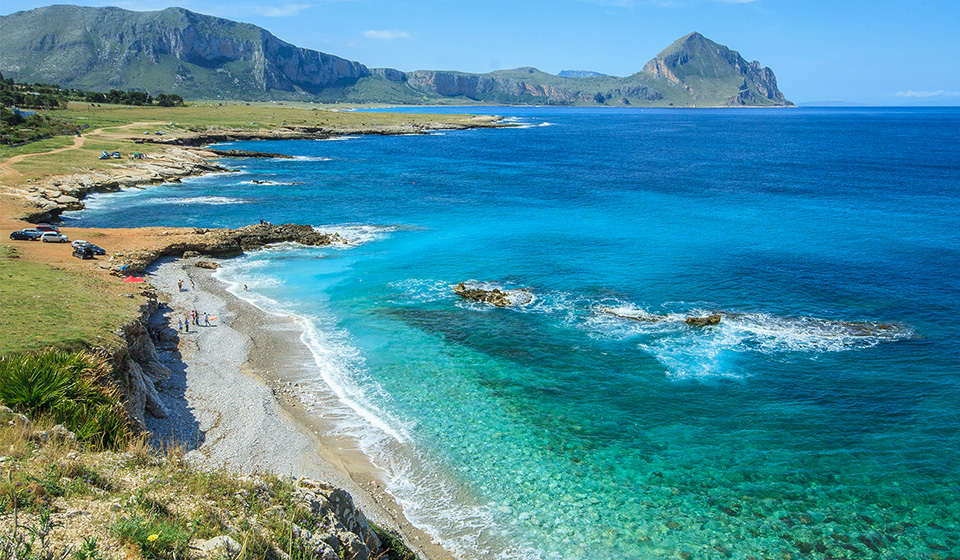
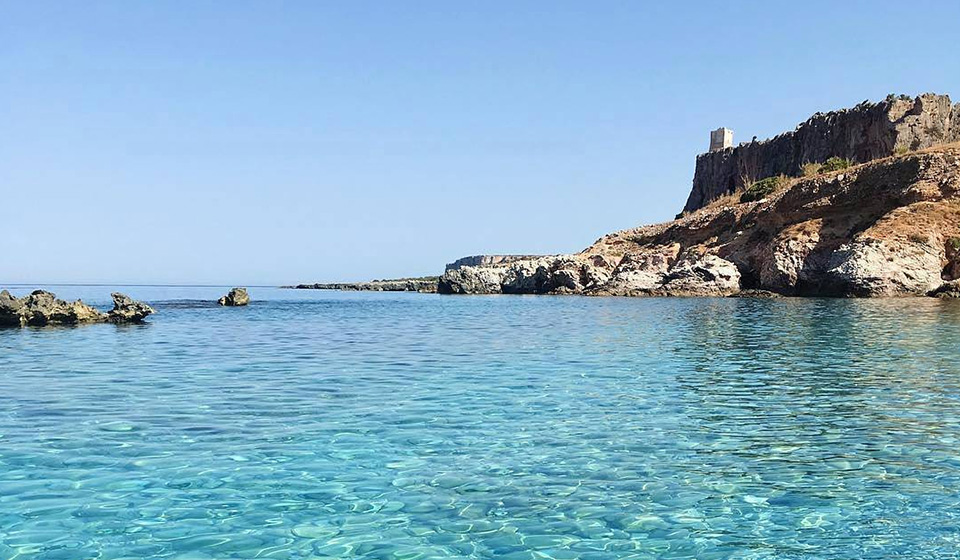
Segesta
SEGESTA In a truly suggestive position, Segesta is the most important of the cities built by the Elymians, a population that settled in western Sicily and is believed to be made up of Trojan refugees. An excursion to admire its main monuments is a must: the Theater and the Temple.
The Theater was built either around the middle of the 4th or in the 2nd century BC. (two dating hypotheses) on the top of Mount Barbaro, in a panoramic position that simply leaves you speechless. Undoubtedly, it is one of the most successful examples of theatrical architecture, which can be placed in the transition from the Greek to the Roman type.
Not far away, the Temple, which rises in majestic solitude on the plateau overlooking the Fusa Valley, was built at the end of the 5th century. B.C. and it is one of the very few Doric temples that have never collapsed. These archaeological jewels have remained, over the centuries, embedded in the landscape, like the natural elements that surround them and are the major attractions of the archaeological area of Segesta and the whole of Sicily.
Segesta
In a truly suggestive position, Segesta is the most important of the cities built by the Elymians, a population that settled in western Sicily and is believed to be made up of Trojan refugees. An excursion to admire its main monuments is a must: the Theater and the Temple.
The Theater was built either around the middle of the 4th or in the 2nd century BC. (two dating hypotheses) on the top of Mount Barbaro, in a panoramic position that simply leaves you speechless. Undoubtedly, it is one of the most successful examples of theatrical architecture, which can be placed in the transition from the Greek to the Roman type.
Not far away, the Temple, which rises in majestic solitude on the plateau overlooking the Fusa Valley, was built at the end of the 5th century. B.C. and it is one of the very few Doric temples that have never collapsed. These archaeological jewels have remained, over the centuries, embedded in the landscape, like the natural elements that surround them and are the major attractions of the archaeological area of Segesta and the whole of Sicily.

